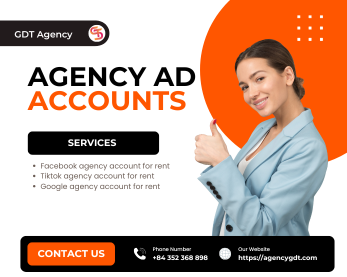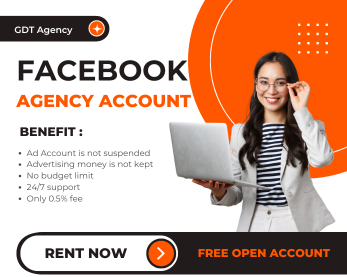Are you in trouble with Learning Limited Facebook ads? Don’t worry, you’re not alone! With the right strategies, you can easily resolve it and optimize your campaigns for better performance. Ready to get your ads back on track? Start with me now!
What is Learning Limited Facebook Ads?

Facebook defines “Learning Limited” as a state where an ad set fails to generate 50 optimization events within the learning phase. This phase ensures the algorithm learns to target the right audience efficiently
When Facebook displays the “Learning Limited” status on your ad, it’s indicating, “I’m struggling to figure out how to optimize your ad effectively.” It’s much like a student finding it challenging to understand a tough concept in school.
Causes of Facebook Ads Learning Limited

If your Facebook ads are stuck at Learning Limited, it may get in trouble with some of these reasons:
- Insufficient Optimization Events
Facebook requires at least 50 optimization events per week for each ad set to exit the learning phase. If you’re optimizing for purchases, but only get 30 purchases per week, your campaign will remain in the Learning Limited phase.
- Low Budget
The budget of your Facebook ads is too small to generate enough impressions or conversions. This is one of the most popular reasons among my Facebook ads team.
They set a limited budget, so their ads can’t be shown enough times to generate the required events. For example, a budget of $5/day may not be sufficient for a campaign targeting high-cost conversions like purchases.
- Small Audience Size
The third reason for Learning Limited Facebook ads is that you target a small audience size. This reduces the opportunity for Facebook’s algorithm to test and learn. If you are using too many layers of targeting (e.g., demographics, interests, and behaviors), Facebook will find it hard to find enough people to optimize the campaign.
Another example might be running a swimsuit campaign during winter. No one searches for that, right?
- Too Many Ads in an Ad Set
Having multiple ads in the same ad set dilutes the budget. Facebook divides the budget among all ads in the ad set, resulting in fewer impressions per ad. If you’re setting an ad set with 10 ads, each getting only a small share of the budget.
- High Optimization Goals
The selected optimization event is too advanced or difficult to achieve. You all know that goals like purchases are harder to achieve compared to events like clicks or add-to-cart. If a new campaign optimizes for purchases but generates only a few per week, it may be restricted by Learning Limited Facebook ads.
- Overlapping Audiences
Audience overlap leads to reduced delivery for some ad sets, making it harder to achieve sufficient optimization events. The overlap may be anything in the demographic of your target audience.
- Narrow Placement Selection
Restricting placements reduce the chances of finding the best-performing combination. If you select only one or two placements instead of “Automatic Placements”, this might be the reason for Learning Limited status.
- Low Click-Through Rate (CTR)
Poor engagement results in fewer optimization events, making it hard to exit the learning phase. If you run ads a few times, you’ll quickly realize that ads with unclear messaging or unappealing visuals tend to fail to engage your audience. This is the root cause you need to address.
- Short Campaign Duration
Facebook’s algorithm requires time to optimize delivery. If your campaigns are run for a very short duration, Facebook may not have enough time to gather sufficient data.
Many of my teammates set their campaign for just 3-5 days and they got stuck in Learning Limited Facebook ads.
- High Competition in the Ad Auction
Competing ads in the same niche or targeting the same audience can drive up costs and reduce impressions. This makes it harder to achieve the required optimization events within budget. If you run ads during peak times like Black Friday, you may trigger Learning Limited.
- Budget Pacing Issues
Facebook tries to evenly distribute the budget throughout the day, which may limit spending during high-opportunity periods. If you set a $10/day budget spread across a 24-hour period, it might lead to Learning Limited.
- Bidding Strategy Issues
Low cost caps or bid caps may prevent your ad from entering auctions. When you set a bid cap too low, your ads get fewer impressions and experience Learning Limited Facebook ads.
- Limited Data Signals (Pixel or Conversions API Issues)
Poor data tracking can hinder Facebook’s ability to attribute conversions. For example, a broken pixel or poorly configured Conversions API could prevents Facebook from collecting sufficient data.
- Frequent Changes to Campaigns
Every change forces Facebook to start learning again. Making constant adjustments to settings (e.g., budget, audience, creative) might reset the learning phase. If you change the budget or audience daily for a campaign, Facebook might flag it as “Learning Limited”.
- Poor Landing Page Experience
A poorly designed or slow-loading landing page can reduce conversions. In these cases, even if the ad performs well, a bad landing page will result in fewer optimization events.
- Restrictive Account Limits
Newly created ad accounts or accounts with limited spend history may face delivery restrictions. If you use a new account and get Learning Limited status, it’s a normal situation. Don’t worry much about that.
>>> Read more problems and solutions in Digital Marketing <<<
Does Learning Limited Affect Facebook Ads?

If you face the Learning Limited Facebook ads, here are some impacts you might experience with your campaign.
- Higher Costs
Facebook’s inability to fully optimize your campaign means higher Cost Per Action (CPA) or Cost Per Conversion, which can increase by 30-40%. Without learning the best ways to deliver ads, the system spends more money on suboptimal placements and audiences.
If your typical CPA is $10, Learning Limited could push that to $13-$14 due to suboptimal ad delivery.
- Lower Ad Performance
Your ads might not reach the right audience or get served at the most effective times and placements. This can result in:
- Fewer clicks or conversions.
- Lower engagement rates.
- Underwhelming return on ad spend (ROAS).
- Inefficient Budget Use
Facebook ads Learning Limited status also leads to the misallocated budget. Since Facebook hasn’t identified the best audience and delivery strategy, your ad spend may be wasted on audiences that are less likely to take the desired action.
- Limited Scalability
Learning Limited campaigns often struggle to scale effectively. Without optimization, it’s harder to achieve consistent results as you increase the budget or expand your audience.
- Slower Campaign Growth
Facebook requires sufficient optimization events to “learn” and improve over time. If your campaign stays in Learning Limited, it won’t grow or improve its efficiency.
- Difficulty Competing in Auctions
Without full optimization, your ads may struggle to compete against other ads in the auction. This can result in fewer impressions and lower delivery.
- Reduced Delivery
Facebook might throttle ad delivery if the algorithm cannot identify a clear path to achieving your goals. This further compounds the difficulty of gathering optimization data.
How Serious Is Learning Limited? - Short-Term Campaigns: Learning Limited can be a big issue because it limits performance during a critical time window. - Long-Term Campaigns: You may still see some results, but your ads won't perform as efficiently as they could if the algorithm had fully learned.
How To Overcome Learning Limited in Facebook Ads?

Since we’ve pinpointed what causes Facebook ads Learning Limited, let’s move on to solving it. It’s not as complicated as you might expect.
Increase the Budget
A higher budget increases the chances of your ads being served more frequently, allowing you to reach the required number of optimization events. Gradually increase your budget by 10-20% every few days to avoid disrupting the campaign.
Client X, a fashion e-commerce store, shared with us: “We gradually increased our budget over 10 days, as per your advice, and exited the Learning Limited phase with a 15% decrease in CPA and a 25% increase in conversions.”
Use Campaign Budget Optimization (CBO) to let Facebook allocate the budget across ad sets effectively. This will help your ads get out of Learning Limited Facebook ads status.
Here’s how we used CBO to resolve Learning Limited for a new product launch. We combined three ad sets with similar audiences and optimized for Add to Cart events. Over five days, this approach achieved 62 optimization events, resulting in a 20% lower CPA.
Choose Simpler Optimization Events
Instead of optimizing for purchases, try optimizing for events such as Add to Cart, View Content, or Landing Page Views. Once you gather enough data, switch to optimizing for higher-level events.
Expand Your Target Audience
There are a few techniques to broaden your audience size:
- Broaden demographic, interest, and behavioral targeting.
- Use Lookalike Audiences based on existing customer data.
- Use Detailed Target Expansion to let Facebook expand beyond your initial criteria.
According to Meta’s official recommendations, audiences of 2 million or larger tend to exit the Learning Limited phase 35% faster compared to smaller, highly segmented audiences.
For example, consolidating ad sets for a tech startup allowed their campaign to double its reach and optimize for 75 events in just five days.
Consolidate Ad Sets
Too many ad sets spread your budget thin, making it harder to gather sufficient data for any single ad set. You could try:
- Merge similar ad sets into one to pool the budget and focus on a larger audience.
- Use fewer ad sets with broader targeting rather than many small, highly specific ones.
Merging five ad sets targeting similar audiences into one broader set for my SaaS client helped pool the budget effectively. This resulted in a 40% increase in optimization events and better ROAS within a week.
Focus on High-Performing Ads
If you are running several ads at a time, you should identify the best-performing ad creatives and pause or remove underperforming ones. Test one or two ads at a time instead of running many variations simultaneously.
Improve Your Ad Creatives
High-quality creatives generate more engagement, increasing click-through rates (CTR) and conversions. To make your ads more attractive to remove Facebook ads Learning Limited status, you can employ these tips:
- Use eye-catching visuals and concise messaging that align with your target audience.
- Include clear calls-to-action (CTAs) that encourage users to take the desired action.
- Test different formats like videos, carousels, and images to find what works best.
Use Automatic Placements
If you don’t use Automatic Placements, enable it now. This lets Facebook deliver your ads across all available platforms such as Facebook, Instagram, Audience Network and eliminate Learning Limited Facebook ads status.
In my recent campaign, enabling Automatic Placements for a fitness brand increased impressions by 27% and reduced CPC by 15%. Facebook’s algorithm automatically allocated spend to Instagram Stories, which yielded the highest engagement rate of all placements.
Optimize for Lifetime Budget
A lifetime budget gives Facebook more flexibility to allocate spending efficiently across the campaign’s duration. Switch from a daily budget to a lifetime budget and let Facebook distribute the spend based on peak performance times.
Avoid Frequent Changes
It’s rare for ads to be set up and perform effectively right away. You’ll definitely need to review your campaigns and make necessary adjustments. My advice to you is:
- Make changes only when necessary and allow the campaign at least 5-7 days to stabilize after adjustments.
- Use Facebook’s Campaign Quality Diagnostics to evaluate performance before making tweaks.
Leverage Retargeting
Retargeting audiences (e.g., website visitors or past customers) are more likely to convert, helping you gather optimization events faster. Here is what you can do:
- Create a retargeting campaign using Custom Audiences from website traffic, app activity, or engagement.
- Offer incentives (e.g., discounts, free shipping) to encourage conversions.
Monitor Auction Overlap
If this is the reason that you’re facing Learning Limited Facebook ads, it’s simple to deal with if you come across it.
- Use Facebook’s Audience Overlap Tool to identify overlapping audiences.
- Consolidate or adjust targeting to minimize overlap.
Use Value-Based Optimization (If Available)
Facebook prioritizes delivering ads to users most likely to generate the highest value conversions. Enable value-based optimization if you have sufficient data from purchases or conversions.
Test Campaign Budget Optimization (CBO)
CBO allows Facebook to allocate your budget dynamically to the best-performing ad sets. Enable CBO at the campaign level to let Facebook manage the budget distribution. Use broad targeting within each ad set to give Facebook more flexibility.
Improve Conversion Tracking
Poor tracking (e.g., broken Pixel, delayed events) can limit Facebook’s ability to attribute conversions. Here are the basic things you should carry out to overcome Facebook ads Learning Limited:
- Ensure the Facebook Pixel is correctly installed on your website or app.
- Implement the Conversions API (CAPI) for more reliable server-side tracking.
- Test and troubleshoot your events in Facebook’s Event Manager.
Adjust Bidding Strategies
If you’re using Cost Cap or Bid Cap, increase the cap to allow Facebook to enter more auctions. My additional solution is to consider switching to the Lowest Cost bidding strategy for better delivery.
Evaluate the Effectiveness of Learning Limited Solutions

Regardless of the actions you implement to fix the Learning Limited Facebook ads status, you should review your campaign afterward. Here are some measurement techniques you can try.
- Monitor Key Performance Metrics
Track the performance metrics most relevant to your campaign goals before and after implementing solutions. These include cost per optimization events (e.g., CPA, CPL, or CPC), number of optimization events per week, ROAS, ad delivery and impressions.
One of my client improved their campaign’s ROAS from 2.3x to 3.1x after implementing these strategies. Below is a performance comparison before and after adjustments:
| Metric | Before Adjustments | After Adjustments | Improvement |
| OAS | 2.3x | 3.1x | 0.35 |
| CPA) | $25.00 | $18.50 | -26% |
| CTR | 2.10% | 2.80% | 0.33 |
| Impressions | 100,000 | 125,000 | 0.25 |
| Conversions | 80 | 120 | 0.5 |
| Optimization Events | 40 | 65 | 0.625 |
- Compare Pre- and Post-Change Results
You can do this with Facebook Ads Manager to create reports comparing performance data before and after applying solutions.
- Set a custom time range to isolate the periods before and after the adjustments.
- Look for trends in cost efficiency, event volume, and overall engagement.
- Track the Learning Phase Status
- Regularly check whether the Learning Limited status has been resolved in Ads Manager.
- If the status changes to Learning or disappears entirely, it’s a sign your adjustments are working.
- Evaluate Audience Engagement
Assess whether your audience is interacting with your ads more effectively. Use CTA and engagement rate like like, comment, or share.
- Test Incrementally
You could evaluate the impact of individual changes by applying one solution at a time:
- Start by increasing the budget and monitor results for a week before adjusting targeting or creative.
- Use A/B Testing in Facebook to compare campaigns with different strategies (e.g., broader targeting vs. narrow targeting).
- Track Conversion Funnel Performance
Analyze your conversion funnel metrics to see if solutions improve the overall journey:
- Impressions → Clicks: Is there an increase in click-through rates?
- Clicks → Conversions: Are more people taking the desired action after visiting your landing page?
- Allow Time for Stabilization
Changes to your campaigns may take time to show results:
- Wait at least 5–7 days after making significant adjustments to evaluate the effectiveness.
- Avoid frequent changes during this period to allow the algorithm to recalibrate.
- Use Third-Party Analytics Tools
If available, leverage third-party tools like Google Analytics or attribution platforms to cross-check the performance of your campaigns beyond Facebook Ads Manager.
- Evaluate Profitability
Ultimately, your solutions should improve the overall profitability of your campaigns:
- Calculate your Profit Margins: Compare the revenue generated to your total ad spend.
- Determine if the adjusted campaign aligns better with your business objectives.
Conclusion
Solving Learning Limited Facebook ads status is often a combination of patience and strategy. By consolidating ad sets, broadening targeting, and improving creatives, most campaigns can exit this phase within 7-10 days.
Remember, incremental changes and continuous monitoring are key to long-term success.
If you’ve encountered this issue, feel free to share your thoughts or ask questions in the comments below. Don’t forget to follow HenryDuy for more expert tips and strategies to make the most of your Facebook Ads!



